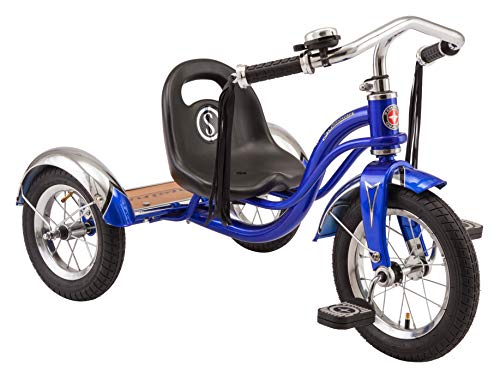As an Amazon Associate, I earn from qualifying purchases.
Starting a bike co-op in underserved communities can make a big difference. It offers affordable transportation and fosters community spirit.
Many neighborhoods lack access to affordable bikes. This limits mobility and opportunities for many people. By creating a bike co-op, you can help solve this problem. A bike co-op is a place where people can share, repair, and learn about bikes.
It’s more than just a bike shop; it’s a community hub. People gather, share skills, and build connections. This guide will show you how to start a bike co-op in your community. You will learn the steps needed, the resources required, and how to engage the community. Let’s start this journey to make a positive impact together.
Introduction To Bike Co-ops
A bike co-op is a place where people come together to share bicycles and tools. Members learn how to fix and build bikes. This helps them save money. People can volunteer their time. They can also donate bikes or parts. Everyone works together. It’s a community effort.
In underserved communities, bike co-ops are very important. They provide affordable transportation. This helps people get to work or school. It also promotes health and fitness. Riding a bike is good exercise. The co-op also teaches valuable skills. These skills can lead to job opportunities. People in the community feel more connected. They help each other. They build trust and friendship.

Credit: www.facebook.com
Assessing Community Needs
Look at maps to find areas with few bike shops. These places may need a bike co-op. Talk to local leaders to learn more about the community. They can share where help is needed most.
Ask people if they want a bike co-op. You can use surveys or simple forms. Visit community centers and schools to gather opinions. Hold meetings to discuss the idea with residents. This helps you know if a bike co-op will be useful.
Planning And Organization
Gather a small team of dedicated individuals. These people should share your vision. Look for skills in mechanics, marketing, and finance. Team members should be passionate about biking. Schedule regular meetings. Discuss goals and tasks. Assign roles based on strengths. Ensure everyone is committed to the project. Working together makes the process smoother.
Write a clear mission statement. This defines your co-op’s purpose. Keep it short and simple. Focus on helping the community. Mention affordable bike access and education. Highlight the goal to empower underserved areas. Share this statement with your team. Use it to guide all decisions. A strong mission keeps everyone aligned.
Securing Funding And Resources
Finding grants and local sponsors can secure necessary funds. Partnering with community organizations helps gather resources and support. Volunteers also play a key role in sustaining operations.
Applying For Grants
Grants can provide crucial funds. Research local organizations that support community projects. Read the guidelines carefully. Follow instructions closely to meet all requirements. Many grants need detailed proposals. Explain your mission and goals clearly. Show the benefits for the community. Attach all required documents. Proofread before submitting.
Fundraising Strategies
Fundraising events can help gather resources. Host local events like bike rides or repair workshops. Encourage community participation. Use social media to promote your events. Partner with local businesses. Seek donations of bikes, tools, or money. Crowdfunding platforms can also be useful. Share your story online to attract donors.
Finding A Location
Look for a space that is accessible to everyone. The area should be safe and easy to reach. Make sure there is enough room for bikes and tools. A garage or an old store might work well. Check the space for good lighting and ventilation. Neighbors should not be disturbed by the noise. Consider parking space for customers. The place should be close to public transport.
Talk to the landlord about rent. Try to get a low rent to start. Ask if you can pay month-to-month. This helps if you need to move. Check if utilities are included in the rent. Find out who pays for repairs. Get everything in writing. Read the lease carefully before signing. Ask questions if something is not clear. Make sure you understand all rules. This helps avoid problems later.
Building Partnerships
Work with local organizations to gather support. These groups can offer space, tools, or volunteers. They know the community well. This makes them valuable partners. Community centers and schools are good places to start. They often have resources that can help. Collaboration builds trust and credibility.
Local businesses can provide funding or donations. They might offer discounts on supplies. Many businesses like to support local projects. They gain a good reputation. Ask them for help. Show them how they can benefit. Partnerships with businesses can lead to long-term support.
Marketing And Outreach
Starting a bike co-op in underserved communities involves outreach, building trust, and promoting cycling benefits. Collaborate with local leaders to identify needs and engage residents. Provide workshops on basic bike maintenance and safety to empower community members and encourage participation. Share resources on how to start a cycling club, helping residents form their own groups for group rides and advocacy. Partner with schools and organizations to make cycling accessible and sustainable for all.
Promoting The Co-op
Social media is a great tool for promotion. Create accounts on Facebook, Instagram, and Twitter. Post updates about events and services. Share stories and pictures of the community. Invite people to join and share. Social media can reach many people fast.
Utilizing Social Media
Post regularly to keep interest high. Use simple and clear words. Share success stories and happy moments. Engage with comments and messages quickly. Ask followers to share posts. Use pictures and videos to show what you do. Offer special events or discounts to draw attention.

Credit: www.facebook.com
Launching The Bike Co-op
Plan an exciting opening event. Invite everyone in the community. Make it fun with music and food. Offer free bike checks and repairs. Have a place where people can donate bikes. Let people test ride different bikes. Share your mission and vision. Explain how the co-op will help the community. Have volunteers to assist and answer questions. Make sure the event is welcoming and inclusive. It will help build trust and excitement.
Keep the community engaged with regular events. Host bike rides and workshops. Create a monthly newsletter. Share stories and updates. Offer classes on bike maintenance. Encourage members to volunteer. Listen to their feedback and ideas. Make the co-op a friendly space. Celebrate successes together. Build strong relationships. Make everyone feel included and valued. This will ensure the co-op thrives.
Sustaining The Co-op
Starting a bike co-op in underserved communities brings affordable transportation and job opportunities. Engage local volunteers and secure funding to sustain the initiative.
Developing Volunteer Programs
Volunteers can be a big help for your bike co-op. They can fix bikes, teach skills, and help with events. Start by finding people who love bikes. Schools, colleges, and community centers are good places to look. Offer training sessions so volunteers feel ready. Make them feel important. Thank them often. Give them small gifts or certificates. This way, they will stay longer and work harder.
Creating Revenue Streams
A bike co-op needs money to run well. Selling used bikes can bring in cash. Fix old bikes and sell them at a fair price. Offer bike repair services too. Charge a small fee for fixing bikes. Workshops can also earn money. Teach people how to fix bikes. Charge a small fee for each class. You can also sell bike parts and accessories. Keep prices low, so more people can buy.

Credit: www.bloomberg.com
Frequently Asked Questions
What Is A Bike Co-op?
A bike co-op is a community-run organization focused on bicycle repair and education. It typically offers tools, parts, and workshops to help individuals fix and maintain their bikes.
Why Start A Bike Co-op In Underserved Communities?
Starting a bike co-op in underserved communities promotes sustainable transportation, offers affordable bike repairs, and creates a sense of community. It empowers residents and provides valuable resources.
How Do I Fund A Bike Co-op?
Funding a bike co-op can be achieved through grants, donations, and fundraising events. Partnering with local businesses and applying for community development grants can also help.
What Skills Are Needed To Run A Bike Co-op?
Running a bike co-op requires basic bike repair skills, organizational skills, and community engagement. Volunteers should be passionate about cycling and committed to helping others.
Conclusion
Starting a bike co-op in underserved communities brings many benefits. It fosters community connections and promotes healthy living. These co-ops provide affordable transportation options. They also offer valuable skills and job opportunities. With dedication and collaboration, you can create a successful bike co-op.
Engage local residents and partners to ensure sustainability. Remember, small steps can make a big impact. Your efforts can improve lives and strengthen the community. Keep pushing forward and stay committed to your mission. Together, we can build a brighter future for everyone.





Leave a Reply